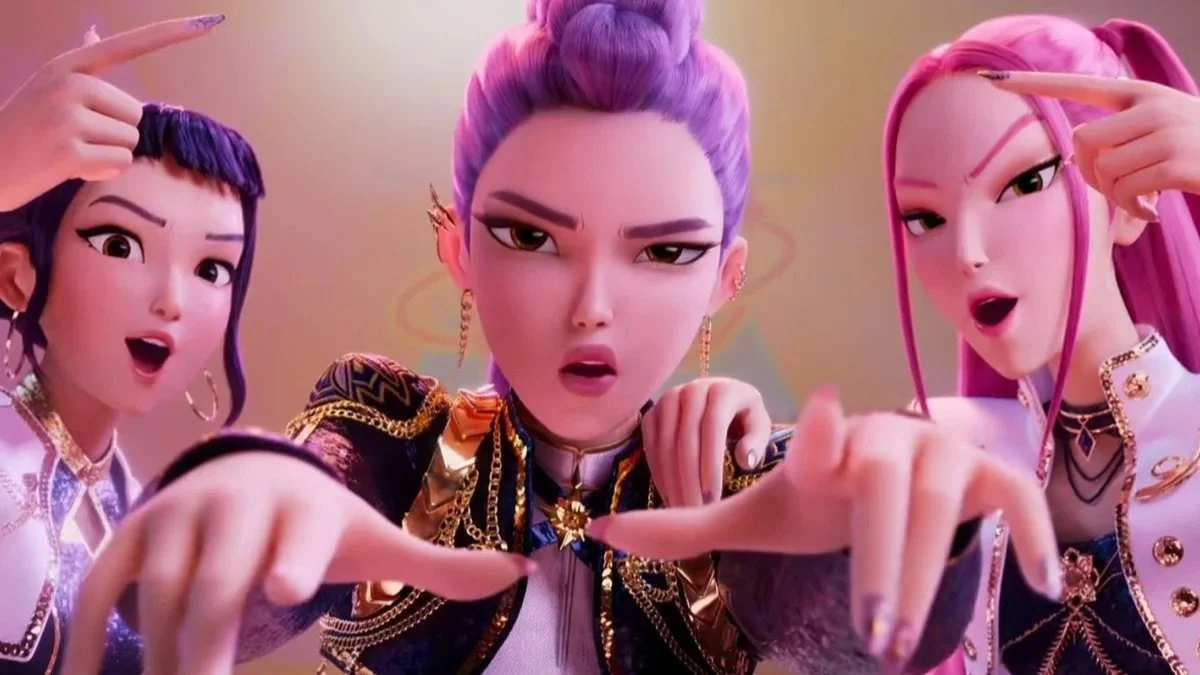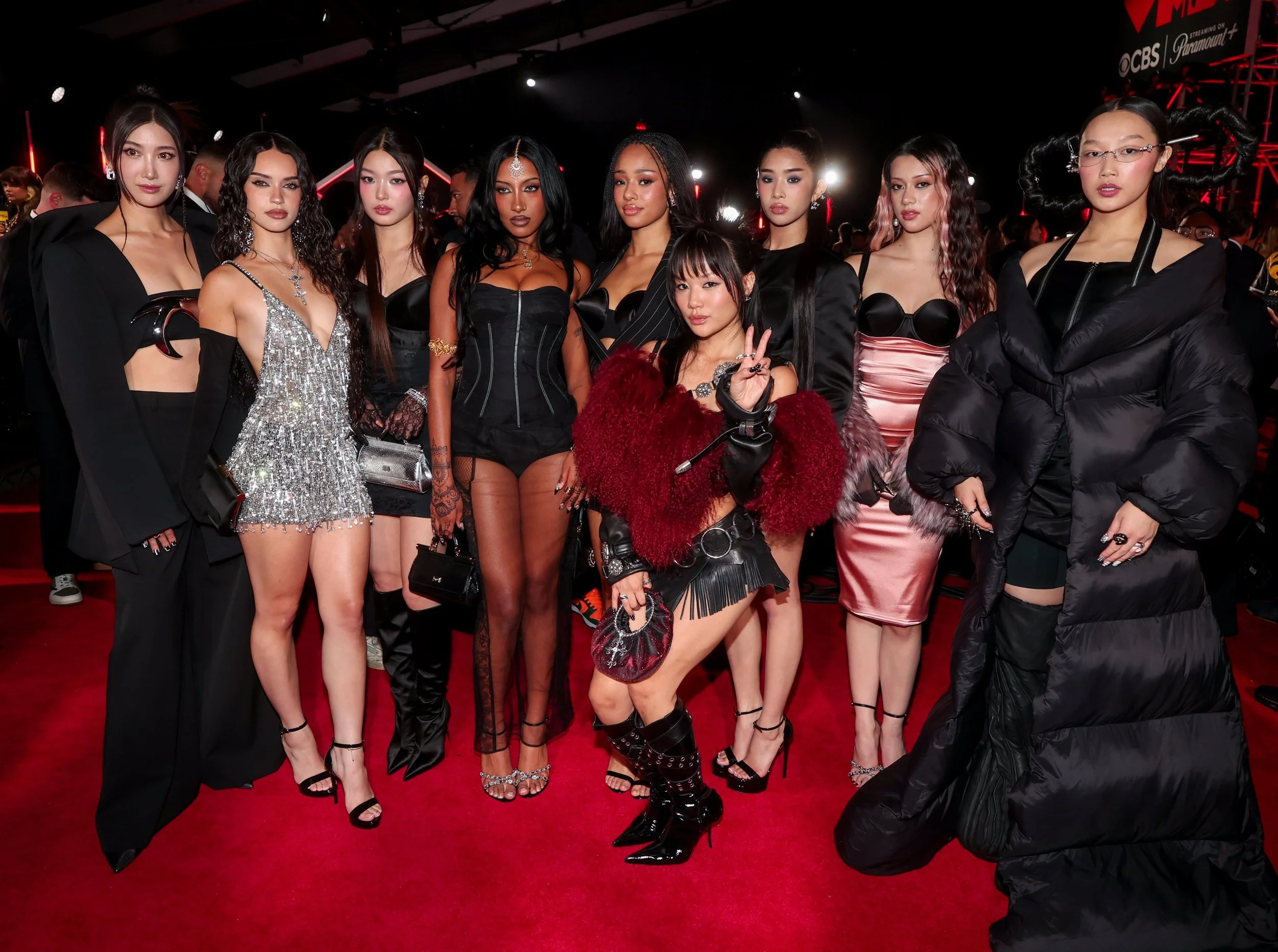Girl Groups Are Back: How the K-Pop Machine is Bringing Back The Western Girl Group
Watching Katseye win their first moonperson at the VMAs felt like déjà vu. In my early teens, I was engaging in some of my first ever Twitter fan wars, doing everything in my limited power for Fifth Harmony to win the coveted Artist To Watch award at the 2014 VMA’s. Finally, Fifth Harmony had become a defining girl group of the 2010s in the U.S. Across the pond, Little Mix was also reigning their own kingdom as the biggest British Girl Group since the Spice Girls. And if you’re anything like me—someone who lived and breathed the pop landscape of the 2010s—they were everything to you. The messy performances, the fashion, the friendships, the drama.
Girl groups have been an essential segment of the pop industry for decades now. They serve as a cultural mirror for young girls, pushing the conversation around portrayals of female expression and diversity. When Fifth Harmony and Little Mix went on their respective hiatus after their successful runs, it felt like the end of an era, a girl-group-shaped hole. So, a decade after their major VMA moment, watching the girls of Katseye win their first ever award at the same ceremony felt like the rebirth of something great.
Of course, it’s not like the world had forgotten the girl group—K-Pop certainly kept the format alive. BLACKPINK just reunited, LE SSERAFIM is touring the U.S., NewJeans is redefining virality. What’s missing are girl groups that can connect with global audiences beyond K-Pop: the kind raised on decades of American pop exports that helped define what mainstream girlhood looks and sounds like across borders.
The Race For The Global Girl Group: HYBE vs. JYP
Credit: Billboard
Enter the 2020s, and it seems like a few executives in Korea noticed the girl-group-shaped hole in the market too. And so the race began, a direct competition between the K-Pop giants: HYBE (home of BTS and Le Sserafim) versus JYP Entertainment (home of TWICE and Stray Kids).
In 2022, JYP partnered with Republic Records and announced the survival show America2Korea. The concept was simple: adapt the rigorous K-Pop training system to develop talent from the U.S. and Canada. And so, the first global girl group was born: VCHA. However, it seems like along the way, the labels couldn’t quite hack how to market this project for western audiences. VCHA’s singles were cute, the talent was certainly there, but something was just missing. That spark, that very specific combination of chemistry, personality and fierceness, just never landed. VCHA failed to live up to label expectations, especially following allegations of child abuse from a former member. The project simply failed.
But then, HYBE and Geffen rolled out their answer: Katseye, emerging from the survival show The Debut: Dream Academy. Out of it came six girls: Lara, Sophia, Yoonchae, Megan, Daniela, and Manon. Six girls who came from literally everywhere: South Korea, the U.S., Switzerland and the Philippines. Six girls that were hand picked, globally selected and terrifyingly polished. While the members come from all over the globe, their image is still shaped by the American entertainment system. Based in Los Angeles, the world’s biggest talent exporter, they exist at the perfect intersection: K-Pop budget and training partnered with Western marketability. A global girl group built to thrive within U.S. pop’s infrastructure.
While their 2024 EP Soft is Strong marked their debut, it wasn’t until their comeback single Gnarly came out that they truly exploded across platforms. Their 2024 radio hit Touch certainly laid the groundwork. The song, paired with simple and fun choreography, earned them a viral Tiktok trend and a spot on the Billboard’s Bubbling Under Hot 100 chart. It was the perfect track to show that Katseye had arrived, but Gnarly proved they’re here to stay. It’s a hyperpop-leaning, experimental track about how… everything’s “gnarly”? Originally, the track was received with skepticism. But everything changed with the live performance. The choreography is pure, concentrated energy. Stamina, instantly viral moves, fan craze. For girl groups, it may just be this decade’s best example of how choreography can really amplify a track. This choreo? Gnarly. In fact, it went so viral that it became the first song by a non-K-pop girl group to chart on the Hot 100 since Fifth Harmony in 2017.
Katseye managed to use the K-Pop formula to attract an obsessed Western audience, securing the win in this high-stakes label gamble. The win being so big, that the labels are already betting on their next group acts. Three former Dream Academy participants have been announced to form a new girl group, with plans to scout a fourth member through upcoming survival show Prelude: The Final Piece. Just days ago, on October 21st, HYBE’s branch in Latin America wrapped their own survival show titled Santos Bravos, another competition show to create the next big Latin boy band.
When The Band Is Fictional, But The Fans Are Real
Credits: The Wrap
Then, later in 2025, a fictional K-Pop girl group overtook the charts: HUNTR/X from Netflix's animated film "K-Pop Demon Hunters." The premise is so absurd it’s genius: three female idols who moonlight as demon-slayers, using music as a protective shield for their beloved fans. Primarily marketed towards children, the movie serves as a new generation’s introduction to girl group power. Still, older fans appreciate that the premise explores the surprisingly touching theme of the idol-fandom relationship, grounding the girls’ powers in their desire to protect the people who love them.
The characters' singing voices are brought to life by real-life singers: EJAE, Audrey Nuna and REI AMI. After many years as a K-Pop trainee, EJAE, HUNTR/X’s main vocalist, saw her chances of debuting slipping away and pivoted into songwriting and producing for other K-Pop acts like TWICE and Red Velvet. However, she recently saw her dreams come true as the single Golden spent 8 weeks at Number 1 on the Hot 100.
Credits: Variety
And in a moment that proves girl groups are truly back, the real-life singers behind HUNTR/X stepped onto the MTV VMAs stage as presenters this September, meeting the six members of Katseye while there. Real or animated, these projects understand that togetherness sells because it feels good.
Why Girl Groups Still Matter
Let’s get one thing straight: this is not about pitting girl groups against soloists—I will defend our main pop girls until the end. But to understand why this new resurgence in girl groups feels so essential, we have to look at what we lost when girl groups went away.
After Fifth Harmony and Little Mix went on indefinite hiatus, female figures in pop culture centered around individual heroines: Taylor’s musical empire, Billie’s whisper-pop, Olivia’s heartbreak diary. All powerful, all personal, and all solo. Suddenly, the idea of girlhood became internal, isolated even. It’s just you against the world; your thoughts, your voice, your words. And while this is a noble and necessary sentiment, the concept of a group—of collaboration, of girls sharing a spotlight—quietly vanished from the pop landscape, and it became clear we had taken them for granted.
Let’s be clear: Girl groups were never just hollow songs, they were cultural mirrors. They were there for little girls to look up to, to look at what a community of women could look like. In a culture that has become undoubtedly individualist, the group dynamic offers us a necessary counter-narrative. Girl groups taught me the importance of female friendships, of empowerment. They taught me that I could be part of something bigger, and to surround myself with people who bring out the best in me. They taught us that success and female empowerment don’t need to be solo acts—that you can succeed with other women, instead of in spite of them. This is the crucial dynamic that vanished from mainstream media, and its return is necessary for a new generation.
What The Comeback Really Means
So, girl groups are officially back. Together, they’re proof that the industry is finally listening to what young women want: collective strength. For the first time in years, this new generation of little girls has got culture-defining sisterhood to look up to. And it looks like these new girl groups are officially being passed the torch. The Katseye girls have confessed to being Fifth Harmony fans in their teens, and Fifth Harmony alums Camila Cabello and Lauren Jauregui have certainly reciprocated that love.
Pop doesn’t have to save the world. But if six girls in matching boots can make it feel a little more connected—if they can remind a generation that being a girl still means being a part of something—then that’s a comeback worth rooting for. Groups deliver a necessary antidote to the era of isolated heroines, confirming to a new generation that being a girl means being part of a powerful, collective whole.



